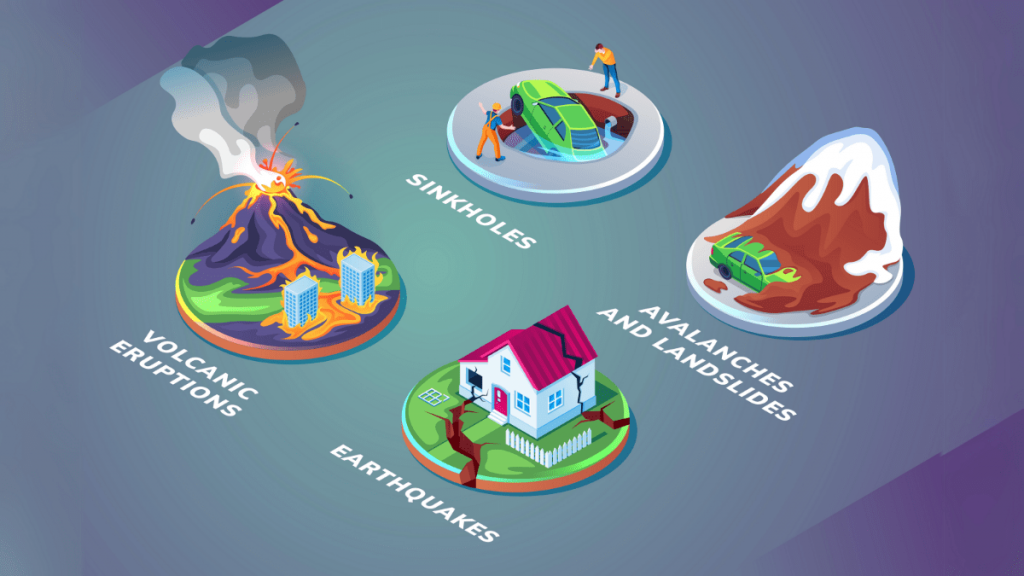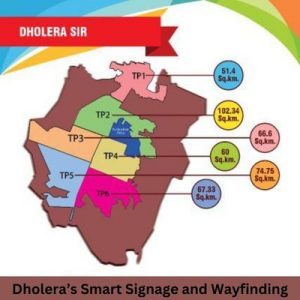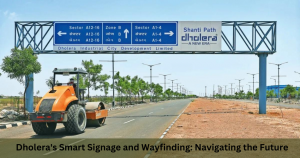Dholera, a city in Gujarat, India, is part of the ambitious Delhi-Mumbai Industrial Corridor (DMIC) project. As a Smart City, Dholera is envisioned as a hub of economic activity, leveraging advanced technologies for urban management. One critical aspect of this development is disaster management. Given the increasing frequency of natural disasters and the potential for man-made hazards, Dholera’s disaster management strategies are vital for ensuring the safety and resilience of its population and infrastructure. This blog explores Dholera’s comprehensive disaster management framework, which includes preparedness, mitigation, response, and recovery phases.
Understanding Dholera’s Vulnerability
Geographical and Environmental Factors
Dholera is situated in a region that is prone to a variety of natural hazards. Its proximity to the Gulf of Khambhat makes it susceptible to cyclones and coastal flooding. Additionally, the seismic activity in the region poses a risk of earthquakes. The arid climate also increases the likelihood of droughts.
Urbanization and Industrialization
The rapid urbanization and industrialization associated with Dholera’s development increase its vulnerability to man-made disasters, including industrial accidents, fires, and hazardous material spills. The influx of people and industries necessitates robust infrastructure and emergency services to manage these risks effectively.
The Four Pillars of Dholera’s Disaster Management
1. Preparedness
Preparedness is the cornerstone of effective disaster management. Dholera’s strategies in this phase focus on education, training, and planning.
Community Education and Awareness
Dholera’s administration conducts regular community education programs to raise awareness about potential disasters and safety measures. These programs include:
- Workshops and Seminars: Targeting residents, businesses, and schools to teach them about disaster risks and preparedness.
- Drills and Simulations: Regularly conducted to ensure the community knows how to respond during an emergency.
Emergency Planning
Comprehensive emergency plans are developed and updated regularly. These plans outline procedures for evacuation, communication, and resource allocation. Key components include:
- Evacuation Routes and Shelters: Marked and easily accessible, ensuring that residents can quickly move to safety.
- Communication Systems: Robust and redundant systems to ensure continuous communication during a disaster.
- Resource Allocation: Pre-positioning of essential resources like food, water, and medical supplies.
2. Mitigation
Mitigation efforts aim to reduce the impact of disasters before they occur. In Dholera, these efforts are integrated into the city’s planning and development.
Infrastructure Resilience
The infrastructure in Dholera is designed to withstand natural and man-made disasters. Key initiatives include:
- Seismic-Resistant Buildings: Implementation of building codes that ensure structures can withstand earthquakes.
- Flood Management Systems: Construction of levees, floodwalls, and drainage systems to manage water flow and prevent flooding.
- Green Spaces: Creating parks and green belts that can absorb floodwaters and reduce heat.
Environmental Sustainability
Dholera’s approach to disaster mitigation includes promoting environmental sustainability to combat climate change, which exacerbates natural disasters. Initiatives include:
- Renewable Energy: Investment in solar and wind energy to reduce reliance on fossil fuels.
- Water Conservation: Techniques like rainwater harvesting and wastewater recycling to ensure sustainable water use.
- Afforestation: Planting trees to combat soil erosion and improve air quality.
3. Response
The response phase focuses on the immediate actions taken during and after a disaster to minimize its impact.
Emergency Services
Dholera has a well-coordinated network of emergency services, including:
- Fire and Rescue: Equipped with modern tools and training to handle various emergencies.
- Medical Services: Hospitals and clinics with the capacity to treat a large number of casualties.
- Search and Rescue Teams: Trained to operate in different disaster scenarios.
Technology Integration
Advanced technologies play a crucial role in Dholera’s disaster response. These include:
- Early Warning Systems: Utilizing sensors and satellite data to provide timely warnings about impending disasters.
- GIS and Remote Sensing: Helping in mapping affected areas and planning rescue operations.
- Drones and Robots: Used for surveillance, search and rescue, and delivering supplies to inaccessible areas.
Community Involvement
Community members are trained as first responders to provide immediate assistance before professional help arrives. Initiatives include:
- Volunteer Programs: Training community volunteers in basic first aid and emergency response techniques.
- Neighborhood Watch: Encouraging communities to look out for each other and report any suspicious activities or potential hazards.
4. Recovery
Recovery involves rebuilding and restoring normalcy after a disaster. Dholera’s recovery strategies focus on long-term resilience and sustainability.
Rehabilitation and Reconstruction
Post-disaster recovery efforts include:
- Rebuilding Infrastructure: Ensuring that rebuilt structures are more resilient and sustainable.
- Economic Recovery: Providing financial assistance and incentives to businesses affected by the disaster.
- Psychosocial Support: Offering counseling and support services to help residents cope with the trauma of the disaster.
Learning and Improvement
After each disaster, Dholera conducts thorough reviews to learn and improve its disaster management strategies. This includes:
- Post-Disaster Assessments: Evaluating the effectiveness of response efforts and identifying areas for improvement.
- Community Feedback: Gathering input from residents to understand their experiences and needs.
- Policy Updates: Revising policies and plans based on lessons learned to enhance future preparedness and response.
Case Studies of Dholera’s Disaster Management
Cyclone Management
In recent years, Dholera has faced several cyclones. The city’s preparedness and response strategies have been tested and proven effective. For example:
- Early Warning and Evacuation: Before the arrival of Cyclone Vayu in 2019, early warning systems provided timely alerts, enabling the evacuation of thousands of residents.
- Effective Shelter Management: Temporary shelters were set up with adequate supplies and medical care, ensuring the safety and well-being of evacuees.
- Rapid Response and Recovery: Post-cyclone, the city swiftly mobilized resources for clearing debris, restoring utilities, and providing financial assistance to affected residents.
Earthquake Preparedness
Dholera’s location in a seismic zone necessitates rigorous earthquake preparedness measures. The city has implemented:
- Seismic Retrofitting: Strengthening existing buildings and infrastructure to withstand earthquakes.
- Community Drills: Regular earthquake drills in schools, offices, and neighborhoods to ensure everyone knows how to react during an earthquake.
- Public Awareness Campaigns: Educating residents about earthquake safety measures, such as securing heavy furniture and knowing safe spots in their homes.
Challenges and Future Directions
While Dholera has made significant strides in disaster management, challenges remain. These include:
- Resource Constraints: Ensuring sufficient funding and resources for disaster management initiatives.
- Coordination and Communication: Enhancing coordination between various agencies and ensuring effective communication during emergencies.
- Climate Change: Addressing the long-term impacts of climate change, which can increase the frequency and severity of natural disasters.
To address these challenges, Dholera is focusing on:
- Public-Private Partnerships: Collaborating with private sector entities to leverage their expertise and resources.
- Innovative Technologies: Continuously integrating cutting-edge technologies to enhance disaster management capabilities.
- Community Engagement: Strengthening community involvement and building a culture of resilience and preparedness.
Conclusion
Dholera’s disaster management strategies exemplify a proactive and comprehensive approach to safeguarding its population and infrastructure. By focusing on preparedness, mitigation, response, and recovery, the city is well-equipped to handle various disasters. As Dholera continues to grow and evolve, its commitment to resilience and sustainability will ensure that it remains a model for other cities in disaster management.




